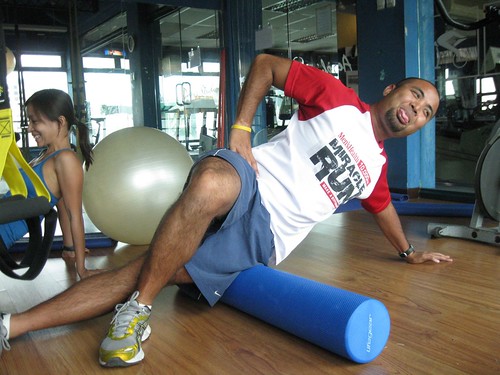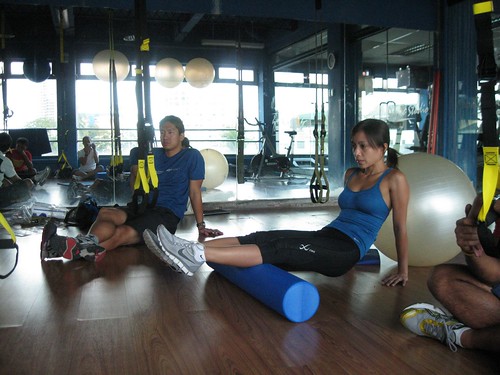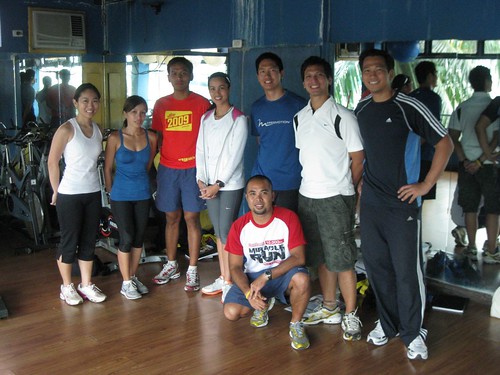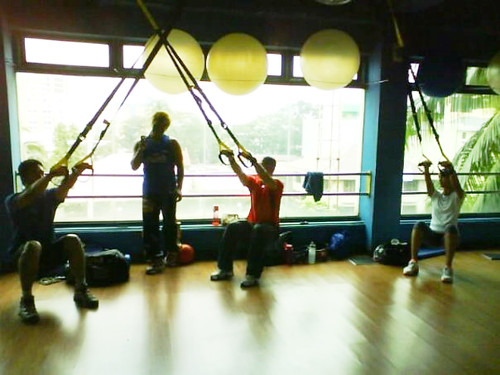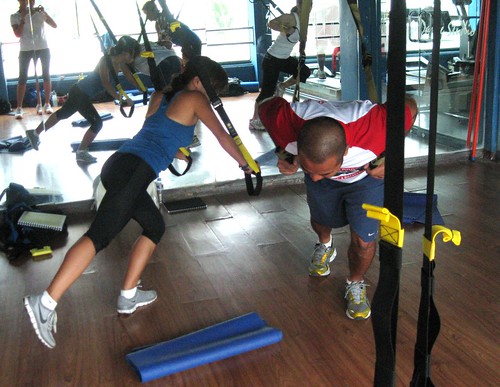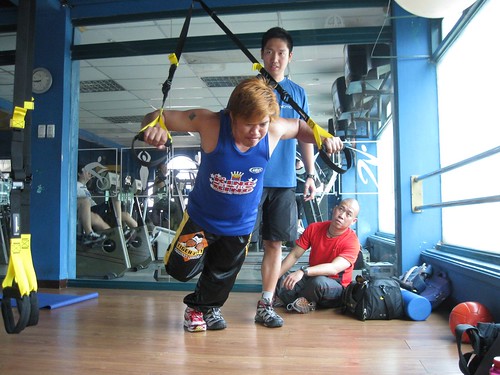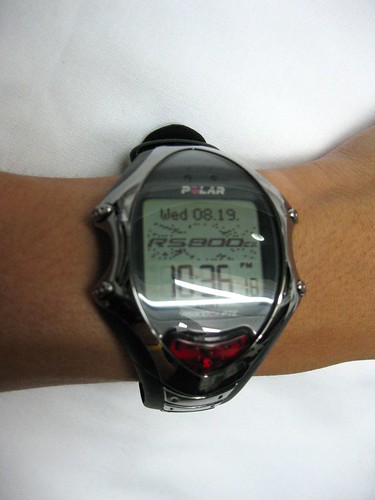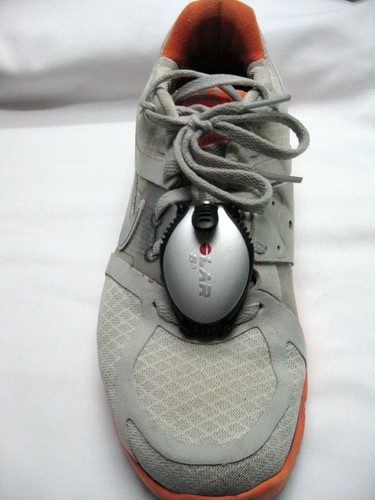I have had a love/hate relationship with the Nike+ Sports Kit and Nike+ Sportsband.
Way back in 2007, the Nike+ Sports Kit (used with the ipod Nano) was my first foray into the world of high-tech running gear. It got me hooked into tracking my distance, pace, time, and calories to help improve my performance. Shortly after, I got my Garmin Forerunner 305 and enjoyed the accuracy of GPS-based information, so the Nike+ Sports Kit was shelved.
In 2008, the Nike+ Sportsband was launched shortly before the Nike Human Race. I was impressed with the new sleeker look, however the product fell below standards due to problems with the screen and water-resistance. I went through three Nike+ Sportbands before I gave up on it completely.
Last June, I was one of the few who got my hands on the new and improved Nike+ Sportsband 2.0 even before it was released in the global market. Honestly, I was quite apprehensive about giving it another try. But, I’m glad I did.
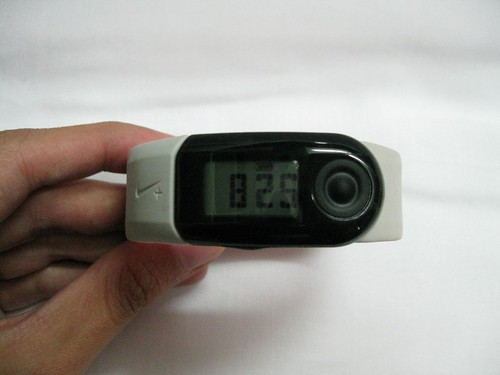
– Gray/Pink Nike+ Sportsband 2.0 –
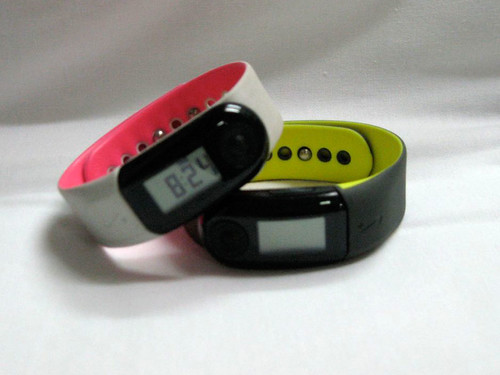
– Nike+ Sportsband 2.0 now comes in other colors –
Since I got the Nike+ Sportsband 2.0, I used two watches in my succeeding runs whenever possible: I wore the Garmin on the left wrist and the Sportsband on the right. Hence, I was able to compare the data retrieved from both.
Initially, I had problems calibrating the product. Below are results from Garmin Forerunner 305 and an uncalibrated Nike+ Sportsband:
GARMIN FORERUNNER 305
1:12:45 min | 10.7km | 6:50 min/km | 635 calories
NIKE+ SPORTSBAND (UNCALIBRATED)
1:12:20 min | 15.97km | 4:31 min/km | 885 calories
Last I checked, I wasn’t elite level status, so the 4:31min/km is definitely wrong. The variance of over 5 km in distance is disappointing. However, when I finally got to calibrate the Sportsband, it produced more credible results for the Run for Home race:
CHAMPION CHIP (OFFICIAL NET TIME)
2:11:19 | 21:24km | 6:11 min/km
NIKE+ SPORTSBAND (CALIBRATED)
2:11:09 | 22.45km | 5:50 min/km
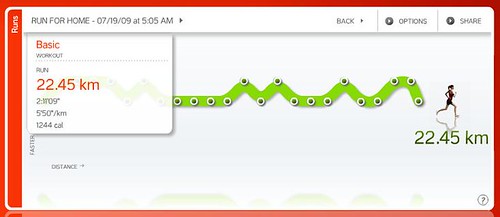
– This is how my Run for Home stats looked on the Nikeplus site. Splits for every kilometer are recorded –
And for a long, slow training run with friends:
GARMIN FORERUNNER 305 (OF JUNC)
2:09 | 18.5km | 6:58 min/km
NIKE+ SPORTSBAND (CALIBRATED)
2:09 | 19.29km | 6:41 min/km
For both long distances, there’s a variance of +/- 1km in distance—not negligible, but not that bad either.
Since my Garmin died a couple of weeks ago, I have been relying solely on the Nike+ Sportsband 2.0 for tracking my runs. Needless to say, road testing this product for over two months—comparing it with another watch and using it solo—has allowed me to give you an honest and comprehensive review of the product.
[PROS]
- Sleek and simple. The new Nike+ Sportsband 2.0 looks the same as its predecessor: a sleek sportsband that’s as light as a feather.
- Variety of colors. While the old Sportsband came only in black with an interior dark orange, this new sportsband comes in different color combinations: grey with an interior pink band, anthracite (dark grey) with a yellow interior band, and black with a red interior band.
- Brighter screen. The screen has a white background so it’s easier to read stats while running.
- User-friendly. Plug and play, folks. Just charge it, put the sensor into your shoe, and use it for a run.
- Faster connection with the sensor. It connects with the sensor faster than you can say “Nike”. No more long waits like the Sportskit.
- More accurate. I was extremely disappointed with distance readings in the sportskit and first sportsband. That explains why I shelved it before. While the Nike+ Sportsband 2.0 is still not the most accurate sportswatch around, it still gives you a fair reading of the distance.
- Long battery life. Battery could last over 10 days without recharging via USB.
- Water resistant. I ran over a handful of times with this under the rain. It survived! I just don’t think you’d want to try dipping it in water.
- Affordable. Good value for money with a cost of P3,295. Price is reasonable compared to double digit spending for other running watches.
- Online community. As in previous Nike+ products, the Nike plus community where you can upload your runs, view your goals and achievements, and challenge others online is a big plus.
- Small and convenient sensor. The sensor hasn’t changed, and that’s a good thing.
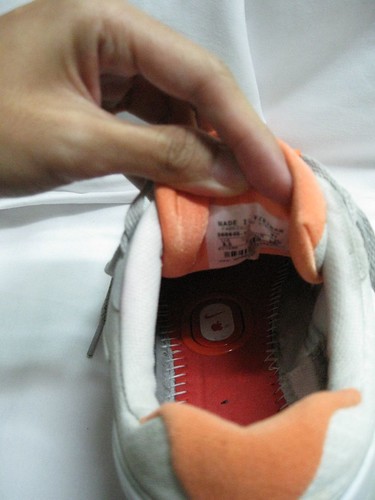
– Sensor fits into a slot in Nike+ ready shoes underneath the insoles –

– Sensor can also be attached to a non-Nike+ shoe using readily available gadgets sold in the market. In this photo, I’m using the SwitchEasy –
[CONS]
- Not the most accurate pace. My pace readings were off the charts. Based on effort, there were times I felt like I was running 5:45 min/km while pace would read 6:15 then jump to 3:40 without me changing pace!
- Color smudges. I got the gray/pink band. After a few uses, the pink smudged over the gray area probably due to sweat or rain.
- Single data per screen. Coming from a Garmin which shows you up to 4 data screens, seeing just one (either time, distance, calories, or pace) onscreen was frustrating.
- No current time while running. Time of day can only be read when the Sportsband isn’t being used to track a walk/run. Maybe they’ll address this with the 3.0?
Overall, the Nike+ Sportsband 2.0 is an improved version of its predecessors. Nike successfully addressed major concerns such as accuracy, screen visibility, and water-resistance. While I still wouldn’t place this in the same league as the Garmin or Polar, this watch is a fairly good entry-level watch for beginners.
NIKE SPORTSBAND 2.0
Released in the market: August 15, 2009 (Today!)
Available at Nike stores
Price: P3,295
